Hicks’ studio and a collection of drying pinch pots.
Image courtesy of: Sight Unseen
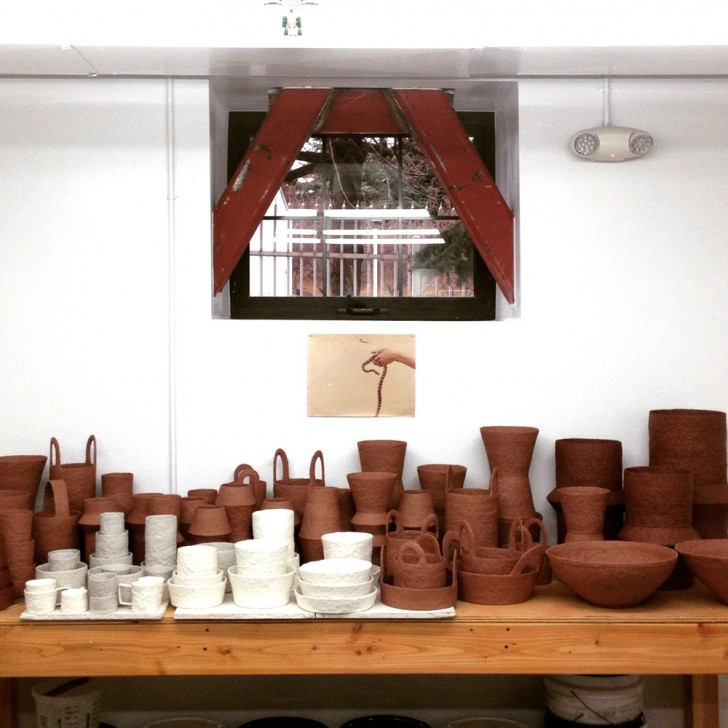
Hicks’ studio and a collection of drying pinch pots.
Image courtesy of: Sight Unseen
Giselle Hicks’ vessels own an organic quality and are visibly a function of the outdoor influences with which she’s surrounded. Making Helena, Montana her home after living in many both rural and urban places, it’s the serenity that she craves which, in turn, translates into her work.
Hicks’ first residency program was at the Anderson Ranch Arts Center in Snowmass Village, Colorado. Here, Hicks spent a total of three years as a summer intern and winter resident. Next, Hicks spent some time at the Kohler factory in Sheboygan, Wisconsin where she learned to make molds and to evaluate scale. Hicks third residency was The Clay Studio in Philadelphia, Pennsylvania. Finally, Hicks found her way to the Archie Bray Foundation for the Ceramic Arts in Helena, Montana. In this mountain town, Hicks found her family through bonding with fellow artists on how to best get their work into the world.
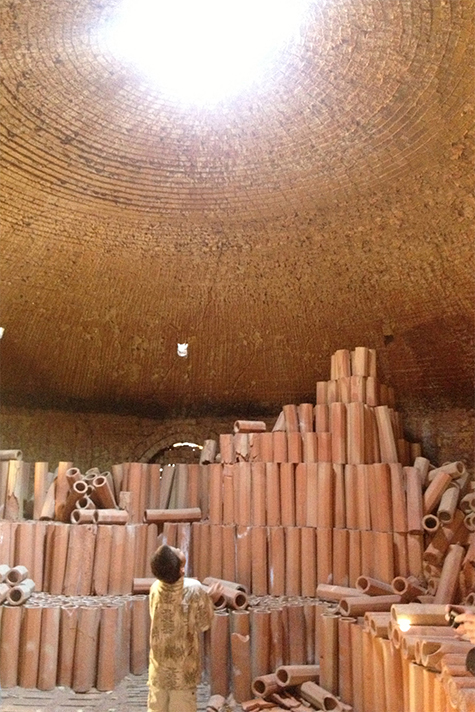
The former Western Clay Manufaturing Company in Helena.
The locale for The Archie Bray Foundation for the Ceramic Arts sits on the site for the former Western Clay Manufacturing Company (established in 1905). This factory produced bricks, sewer pipes, and hollow tile from the local clay deports. It’s no surprise that many of the buildings in Helena are made from this exact brick.
Image courtesy of: Sight Unseen
About Hicks’ first summer in Helena she says, “It was a magical summer working with 10 other artists in a beautiful old brick warehouse studio. Many of the factory buildings, equipment and beautiful beehive kilns still stand on the property and the many of the artworks on the grounds are made from the brick and pipe.”
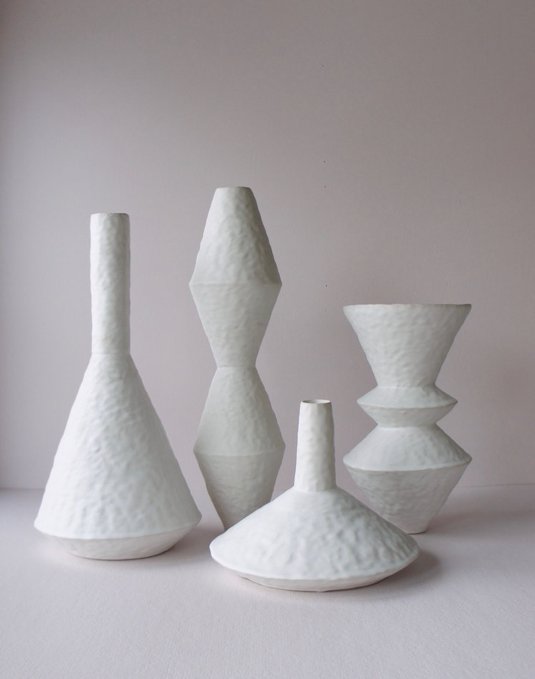
A collection of vessels.
Image courtesy of: NYKYINEN
After permanently relocating to Montana, Hicks gained a new appreciation for red bricks. About the material she says, “After being around the red brick on a daily basis, I came to appreciate the warmth and depth of the iron-rich surface. I used to work strictly in porcelain and had a serious aversion to brown. This particular clay body is undeniably beautiful and similar in tone to the bricks around the Bray.”
Hicks’ forms are built by hand, using a coil and pinch technique. They vary in form, volume, shape, color, and composition and have a mottled texture. This texture is a function of Hicks’ finger prints which are left over from the pinched forming process which is then soften by the thick, opaque glaze that’s applied to the surface.
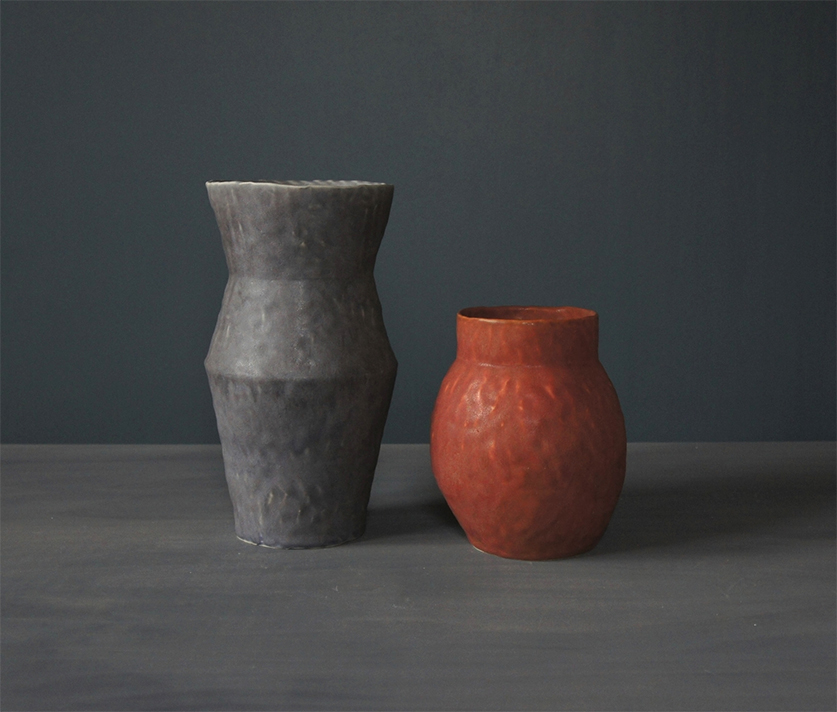
Image courtesy of: Giselle Hicks
Hicks produces everything from full-scale ceramic tables with flower decorations to decorative wall tiles to pinched vessels. Hicks likes to move from one project to another vs. being confined to only one body of work at a time. Bottom line- her intentions is always to make something beautiful for another person to live with.
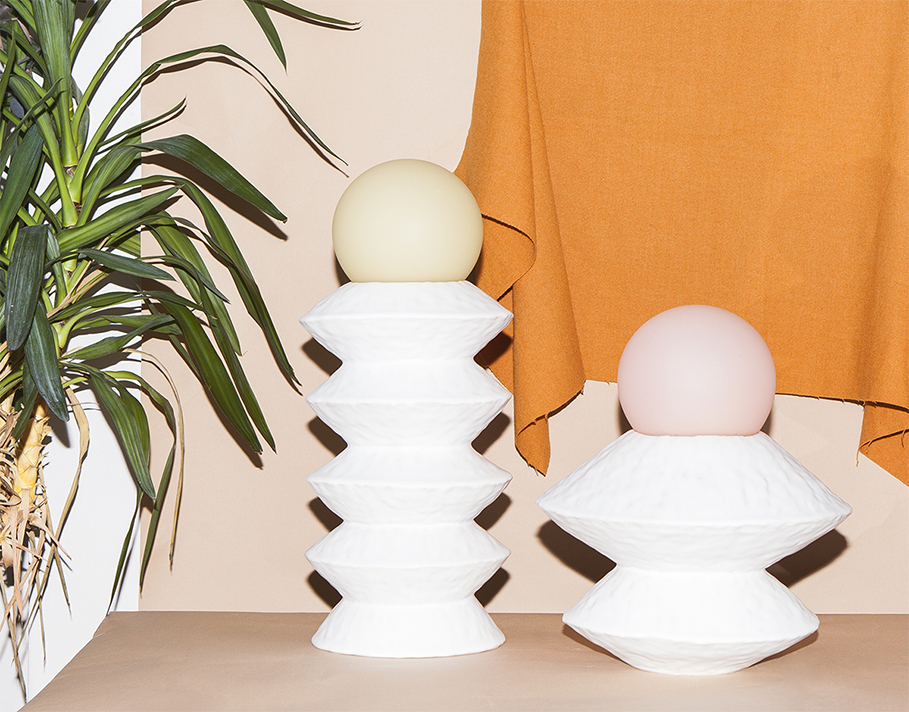
Hicks said about these lights, “A handmade object just feels special. It’s a richer experience to feel like an object has a story and someone put gheirhands on this thing and made these decisions for you.”
Image courtesy of: Sight Unseen
Hicks collaborated with designer, Syrette Lew, to build bases for Lew’s lamps. A recent trip Mexico inspired Lew to use a soft color palette which fit perfectly with Hicks’ color palette. She formed the bases to fit the lamps and used inspiration from ancient Greek and Chinese vessels, transforming terra-cotta clay into shapes that are elegant, simple, and structural… some round, others columnar, other ones fluted.